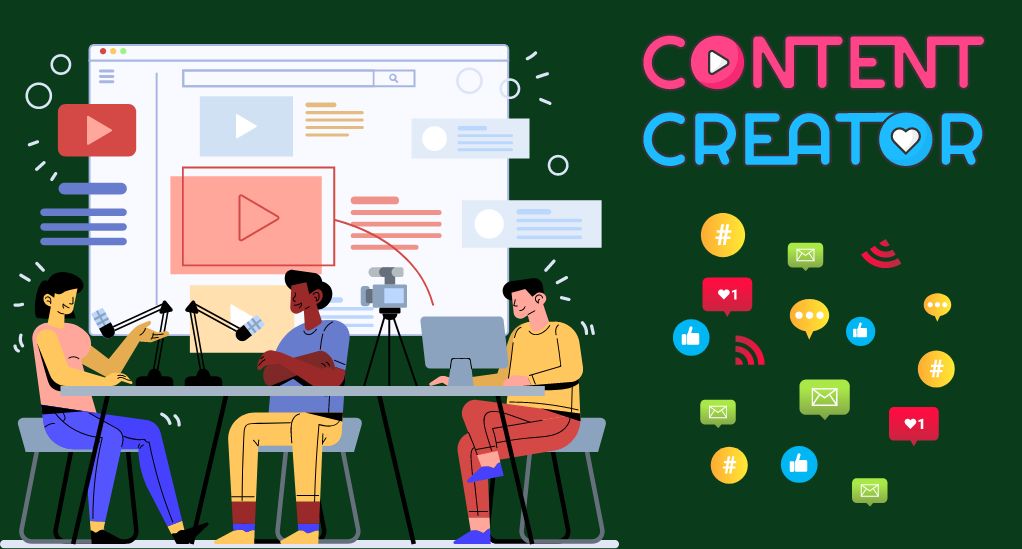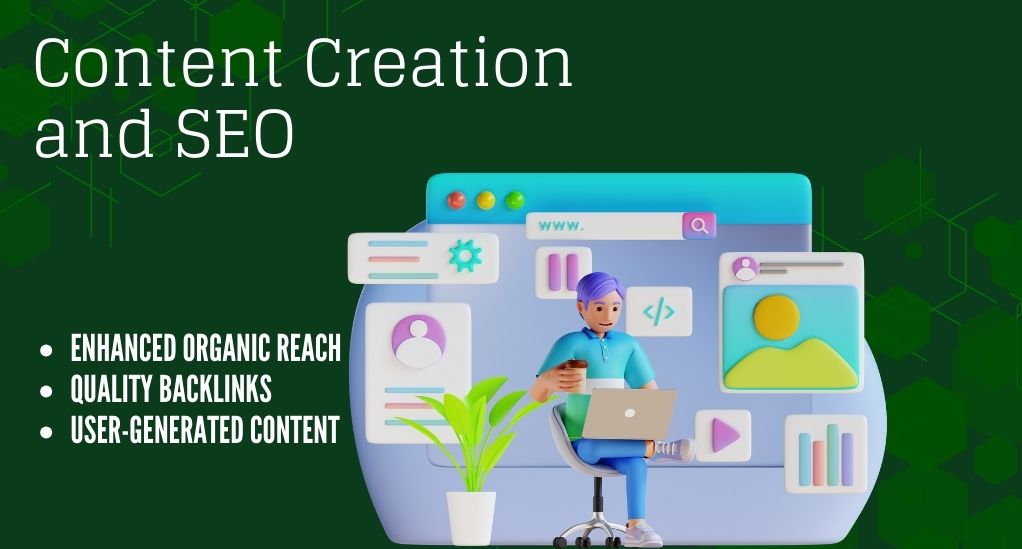How to Revolutionize Your Marketing Strategy with Content Creators: A Comprehensive Guide
In the ever-evolving landscape of digital marketing, businesses are constantly seeking innovative strategies to stay ahead of the curve. The integration of content creators into marketing strategies has emerged as a revolutionary approach, fostering authentic connections and enhancing brand visibility. In this section, we will explore the evolution of marketing strategies and the rising significance of content creators in the digital space.

The Evolution of Marketing Strategies
Traditional Marketing Strategies
In the past, marketing strategies were predominantly centered around traditional mediums such as television, radio, and print advertisements. These methods, although effective in their time, often required substantial budgets and offered limited engagement opportunities.
Transition to Digital Marketing
As the internet became more accessible, marketing strategies transitioned to digital platforms, leveraging websites, social media, and email marketing to reach a wider audience. This transition not only democratized marketing but also introduced new avenues for creativity and engagement.
Comparison Table
| Aspect | Traditional Marketing | Digital Marketing |
|---|---|---|
| Reach | Limited | Global |
| Engagement | Low | High |
| Cost | High | Variable |
| Customization | Limited | High |
| Analytics and Tracking | Limited | Comprehensive |
The Rise of Content Creators in the Digital Space
Defining Content Creators
Content creators are individuals or groups who create and share digital content, often specializing in specific niches such as technology, fashion, or food. Their content can take various forms, including blogs, videos, podcasts, and social media posts.
The Impact of Content Creators on Marketing
Content creators have significantly impacted marketing strategies by offering authentic and relatable content that resonates with their audience. Collaborating with content creators allows brands to tap into established communities, fostering trust and enhancing brand perception.
Understanding the Landscape of Content Creation
In the dynamic world of digital marketing, understanding the nuances of content creation is pivotal. This section delves deep into the various types of content creators and their role in modern marketing, providing a comprehensive view of the current landscape.
Different Types of Content Creators
Content creators can be categorized based on the type of content they produce and the platforms they use. Here, we will explore some of the prominent categories:
- Bloggers: Individuals who create written content on websites, often providing in-depth analysis or tutorials on various topics.
- Vloggers: Content creators who specialize in video content, sharing their insights, reviews, or stories through platforms like YouTube.
- Podcasters: Individuals or groups who host audio shows, discussing various topics ranging from technology to lifestyle.
- Social Media Influencers: Creators who have a significant following on social media platforms, leveraging their influence to promote brands or products.
- Photographers and Visual Artists: Individuals who create visual content, including photographs, illustrations, and artworks, often sharing them on platforms like Instagram.
The Role of Content Creators in Modern Marketing
Content creators play a significant role in modern marketing strategies, offering a plethora of benefits that can enhance a brand’s presence in the digital space. Here, we explore some of the key roles they play:
- Building Community Engagement: Content creators foster communities where like-minded individuals can engage, discuss, and share content, creating a vibrant ecosystem around the brand.
- Enhancing Brand Authenticity: Collaborations with content creators can enhance brand authenticity, as creators often share their genuine experiences and reviews with their audience.
- Boosting SEO Efforts: Quality content created by influencers can boost a brand’s SEO efforts, driving organic traffic and improving search engine rankings.
- Facilitating User-Generated Content: Content creators encourage their followers to create and share content, facilitating the generation of user-generated content, which can further amplify the brand’s reach.
Building a Collaborative Environment
In the modern digital landscape, fostering a collaborative environment with content creators can be a game-changer for brands. This section explores strategies for identifying the right content creators and establishing mutually beneficial partnerships.
Strategies for Identifying the Right Content Creators
Identifying the right content creators is a critical step in building a successful marketing strategy. Here, we outline a step-by-step approach to finding the perfect collaborators:
- Define Your Target Audience: Understand the demographics and preferences of your target audience to identify creators who resonate with them.
- Research Potential Collaborators: Conduct thorough research to find creators who align with your brand values and have a following that matches your target audience.
- Analyze Engagement Rates: Beyond follower count, analyze the engagement rates of potential collaborators to gauge their influence and reach.
- Review Past Collaborations: Review the past collaborations of potential creators to understand their approach and the results they have achieved.
Establishing Mutually Beneficial Partnerships
Once the right creators are identified, the next step is to establish partnerships that are beneficial for both parties. Here, we discuss some strategies to foster successful collaborations:
- Clear Communication: Establish clear communication channels to discuss goals, expectations, and deliverables.
- Creative Freedom: Allow creators the freedom to express their creativity, as their authentic voice is what resonates with their audience.
- Fair Compensation: Ensure fair compensation for creators, recognizing the time and effort they invest in creating content.
- Long-Term Relationships: Aim to build long-term relationships with creators, fostering a sense of community and collaboration.
Leveraging Content Creators for Brand Storytelling
In the contemporary marketing sphere, brand storytelling has emerged as a potent tool to forge deeper connections with the audience. Content creators, with their authentic voices and creative prowess, can be instrumental in crafting compelling narratives for your brand. In this section, we will explore how to effectively leverage content creators for brand storytelling.

Authenticity and Relatability in Content Creation
Harnessing Authentic Voices
Content creators are revered for their authentic and personal approach to content creation. Collaborating with them allows brands to harness these authentic voices, fostering a genuine connection with the audience.
Building Relatable Narratives
Content creators excel in crafting narratives that resonate with their audience. By integrating their personal experiences and stories into the brand narrative, they create content that is both relatable and engaging.
| Aspect | Traditional Advertising | Content Creator Collaboration |
|---|---|---|
| Authenticity | Scripted | Genuine |
| Relatability | Generalized | Personalized |
| Engagement | Passive | Interactive |
| Creativity | Constrained | Diverse and Innovative |
Content Creation and SEO: A Synergistic Approach
In the digital era, SEO (Search Engine Optimization) stands as a cornerstone in enhancing online visibility. Collaborating with content creators not only amplifies your brand narrative but can also significantly boost your SEO efforts. In this section, we will explore the synergistic relationship between content creation and SEO, offering tips to optimize content for search engines.
SEO Benefits of Collaborative Content Creation
Enhanced Organic Reach
Content creators often have a dedicated following, which means collaborating with them can enhance your brand’s organic reach. Their content, rich with relevant keywords and backlinks, can improve your site’s SEO, driving more organic traffic.
Quality Backlinks
Content creators can provide quality backlinks to your website, a critical factor in SEO. These backlinks can improve your site’s domain authority, potentially boosting your rankings on search engine results pages.
User-Generated Content
Collaborations often encourage user-generated content, which can further enhance SEO. User reviews, testimonials, and social media shares can create a buzz around your brand, improving visibility and SEO.

| SEO Aspect | Benefit of Collaborative Content Creation |
|---|---|
| Organic Reach | Enhanced visibility and increased traffic |
| Quality Backlinks | Improved domain authority and search engine rankings |
| User-Generated Content | Increased engagement and fresh, regular content on platforms |
Tips for Optimizing Content for Search Engines
Keyword Integration
Encourage content creators to integrate relevant keywords naturally within their content. This strategy can help in ranking higher for those keywords, attracting a targeted audience.
Mobile Optimization
Ensure that the content created is optimized for mobile devices, considering the significant number of users accessing content through smartphones.
Engaging Visuals
Encourage the use of engaging visuals, as they can enhance user experience and potentially increase the time spent on the page, a positive signal for SEO.
Measuring the Impact of Your Strategy
To ensure the success of your marketing strategy, it’s imperative to measure its impact meticulously. This section will guide you through the key performance indicators (KPIs) that are essential in evaluating the effectiveness of content creator collaborations, along with tools and techniques to track the success of your strategy.
Key Performance Indicators (KPIs) for Content Creator Collaborations
Engagement Rate
Engagement rate is a vital KPI that measures the level of interaction that content receives from the audience. It encompasses likes, comments, shares, and other forms of engagement.
Reach and Impressions
Reach and impressions indicate the number of people who have seen the content and how many times it has been viewed, respectively. These metrics help in assessing the visibility of your brand.
Conversion Rate
Conversion rate measures the percentage of users who take a desired action, such as making a purchase or signing up for a newsletter. It helps in evaluating the direct impact of the collaboration on sales or leads.
Return on Investment (ROI)
ROI calculates the financial returns gained from the collaboration, compared to the costs incurred. It helps in assessing the economic viability of the collaboration.
Tools and Techniques for Tracking Success
Analytics Tools
Leverage analytics tools like Google Analytics to track website traffic, user behavior, and conversions resulting from the collaboration.
UTM Parameters
Utilize UTM parameters to track the effectiveness of specific campaigns, helping in identifying the sources of traffic and conversions.
Social Media Insights
Make use of social media insights to gauge the performance of content on platforms like Instagram and Facebook, offering data on reach, engagement, and follower growth.
Feedback and Reviews
Collect feedback and reviews from the audience to understand their perception and the impact of the collaboration on brand image.
Conclusion
As the digital marketing landscape continues to evolve, the role of content creators is becoming increasingly pivotal. Emerging trends such as Virtual and Augmented Reality (VR & AR) offer immersive experiences, while AI and machine learning are enhancing personalization and strategy optimization. Moreover, a growing focus on sustainability and social responsibility in collaborations is fostering a positive brand image and resonating well with audiences. Brands aiming to stay ahead in the game should keenly observe these trends, integrating them to create innovative and engaging marketing strategies.


Leave a Reply